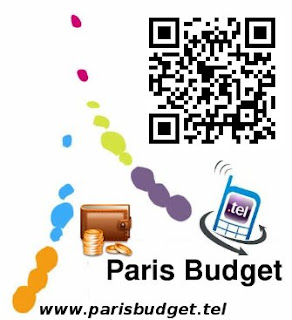What we need:
(Nota Bene: Any Internet domain URL, site or page, has to be mobile friendly.)
1.)
A page:
--> one blog post
or
--> one OpenOffice document
or
--> one Dot Tel domain sub-domain, or other mobile web site or mobile web page sub-domain
or
--> Facebook (mobile) Shop listing, Auctiva shop listing, eBay (mobile) item listing, Amazon listing, etc.
or
Other
2.)
Mobile content (URL / Link):
--> Text (info about product, item, service(s), real estate,
--> Pictures
--> Links to mobile web content (sites, contact ifo, text, etc.)
-->--> page = link (pdf, png transparent picture with text, other docu (OpenOffice), contact info, etc.
3.)
A QR-Code (generated by a Code Generator, for Web Media usage):
Input: Enter content for mobile device into Code Generator (link, contact info, text, etc.).
Output: one (1) code.
4.)
Page layout and design idea (Web Media) :
With help of mind map, template, wrappers, etc.
Create and design wrapper for inserting later code (paste, after downloading from storage device or external server, and copying).
5.)
QR-Code customization for implementing into sales page (online- and Web Media publishing):
Customise, with „GIMP Image Editor“, or „Photo Shop“, or other.
Design, store, resize, and fit code into page layout (side, header right, footer right, etc.).
6.)
Generate and customize QR-Code of sales page for offline- and Print Media publishing/usage (second, and final generated code).
7.)
Publish and promote code offline (Print Media), together with an advert text, to animate mobile phone users to scan the code:
Online: Web Media: blog or other web site.
Offline: Print Media: stickers, posters, billboards, flyers, brochures, cards, etc.
INPUT (= Content: 1.), 2.), 3.), 4.) and 5.))
OUTPUT (= Print Media & Web Media: QR-Code: 6.))
INTERACTIVETY: Output gets scanned, to view Input
(Content). Potential customer possibly
contacts the publisher/advertizer/seller or service provider)
Result: Successful sale, within reasonable time. Cost efficient and saving, and time saving, and last, but not least: fun.

Learn more:
Linking print and out-of-home media to online mobile-friendly pages.
Mobile Phone:
(And Mobile Web Media / Internet:)
--> Scans from paper (Print Media)
--> Scans from PC and laptop screen (Web Media)
--> Reads Web Media (mobile documents, mobile web sites)
Print Media
--> Offline marketing and advertising
--> plus added QR-Code
--> The text must explain, what you get, from scanning the code.
Web Media:
--> Online marketing and advertising
--> plus added QR-Code
--> The text must/should explain, or give a hint about what (sort of info) you get, from scanning the code.
Below are some examples of medium that can take advantage of the QR-Code:
* Magazines
* Product catalogs
* Newspapers
* Posters
* Business Cards / Letterhead
* Direkt marketing flyers
* Floor Decals
* Indoor and outdoor signage
* Billboards
* T-shirts (imagine how you could engage an audience at a special event!)
* All kind of online pages where a QR-code make sense (blog articles, Banner Ads, Coupons)
Conclusion:
Basically, Print Media and Web Media offer the same.
The most effective marketing effects: ?.
Where is interativity that boost sales?:
The initiative comes from the consumer who scans product information, and who will be glad, to receive quality mobile web content, from a mobile web site.
QR is the abbreviation for Quick Response, as the creator intended the code to allow its contents to be decoded at high speed
Does this boost SEO for the sellers web site?:
It will, if the consumer visits the web site. And perhaps a few times.
At the end of the day, the seller wants to sell his products, and get a better search enging ranking for his web site / web shop.
And the consumer would like to land at a proper mobile web site, or web page, and find a bargain, or value for money, or just learn something interesting and useful. The consumer might even share the web site of the seller, by sharing code and sharing the product and shop info through social media networks.
The consumer must:
1.) understand QR-Codes
2.) have a mobile phone with a inbuilt camera, as well as a application for scanning codes.
3.) Furthermore, must the client be willing to scann the code, providing he is convinced, that he will get some qualitiy mobile web content about the seller and his products.
The seller must:
1.) provid the consumer with knowledge about QR-Codes
2.) explain to the consumer, what he can expect to see and read, by scanning the code
As the whole idea is, to interact beween online and offline business and marketing, and build a bridge between the (world wide) web and the brick and mortar shops and ware houses in the real world.
However, not only should the seller display a QR-Code in the Print Media, but he should also spread the word by flyers, brochures, cards, stickers, T-shirts, posters, billboards, and so on.
Which means, that the Print Media on news papers, is not enought, and that stickers and billboards (with Dot Tel domain names and QR-Codes, can be more effective.
In general, the Print- and Web Media adertisier is the same person / company / business.
It is already clear, that QR-Codes will be a very strong marketing tool for businesses, offline and online. Whoever gets familiar with QR-Codes wins. It shall be a win-win situatin beteen sellers / manufacturers / producers and consumers.
So far, my thoughts and comments to the above picture.
.



































































No comments:
Post a Comment